

| Stage One: Working very loosely from a photograph, I make a preliminary sketch (not shown), repositioning, distorting, and eliminating elements to improve the composition. After transferring my drawing to stretched watercolor paper, I begin a violet underpainting of only those values which derive from shades and shadows. The violet colors are mixed from Phthalo Blue and Red Rose Deep, and are made to lean either warm and cool as the mood strikes. |
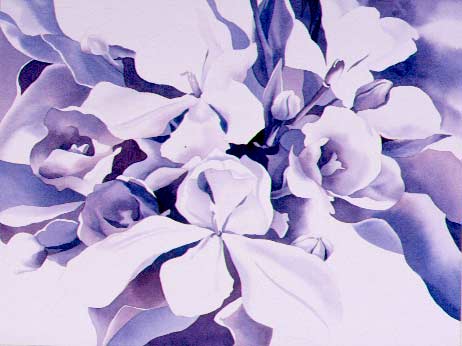
| Stage Two:
The underpainting continues using both wet-in-wet and |
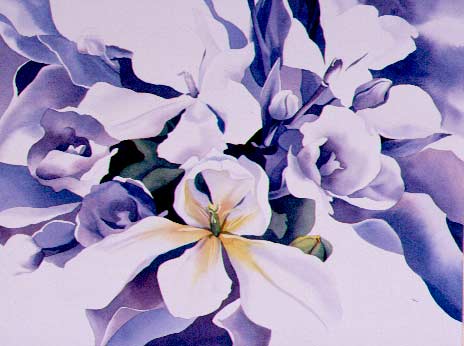
| Stage Three: The tinting phase begins in which the local colors will be used. First I apply the local color of yellow in the heart of this white tulip, some glazes of green in the foliage, and a blend of colors on the little bud. No area of this painting gets more than one glaze in the tinting phase, and I am very careful not to disturb or lift the violet underpainting as the tinting glaze goes on. As with the violet underpainting, both wet-in-wet and wet-on-dry techniques are used to apply the local colors. |
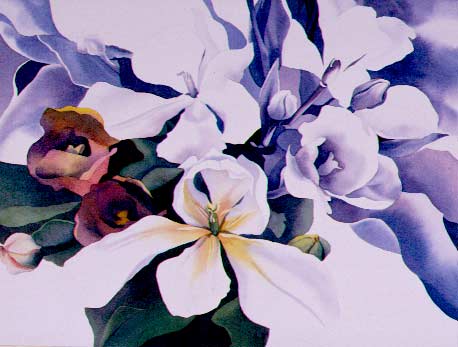
| Stage Four: Ahhh...here come two red tulips, tinted with blended washes of yellows, oranges and reds. Note how the violet underpainting gives form to the flowers, leaves, and buds, as it shows through the local colors. |
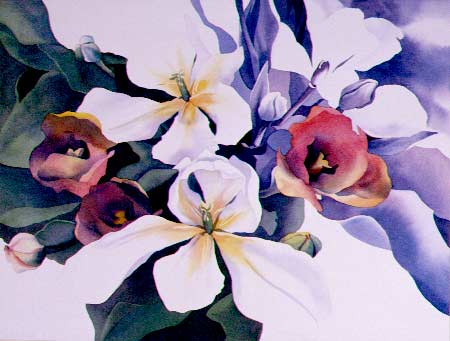
| Stage Five: Another red tulip appears. This one is brighter than the first two because in the underpainting, this tulip has less violet and more reserved white paper. The foliage areas are tinted as masses, not as individual leaves. |
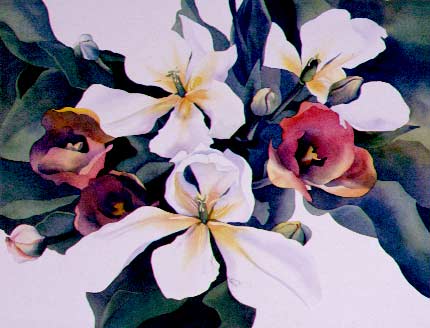
| Stage Six: As the tinting phase nears completion and the entire subject has been glazed with local color, the painting reminds me of an old sepia photograph, hand tinted with color. I miss the violet underpainting in its striking unity and simplicity, but am much attracted to the painting which has developed. A tough decision remains --what to do with the three remaining "background" areas? |

| Stage Seven: Regretting that I am about to lose those nice lost and found edges where the white petals flow undefined into the "background", I apply blended washes of warm colors, wet-in-wet. And the painting is complete. |
Watercolor, 20" x 17" framed
Collection of C. Vippus
Visit Liz Fluehr's web site to view more of her work.
You may contact Liz at fluehr1@yahoo.com.
[ Artist Interviews | Artshow.com ]
Copyright © 1999, Liz Fluehr All rights reserved.